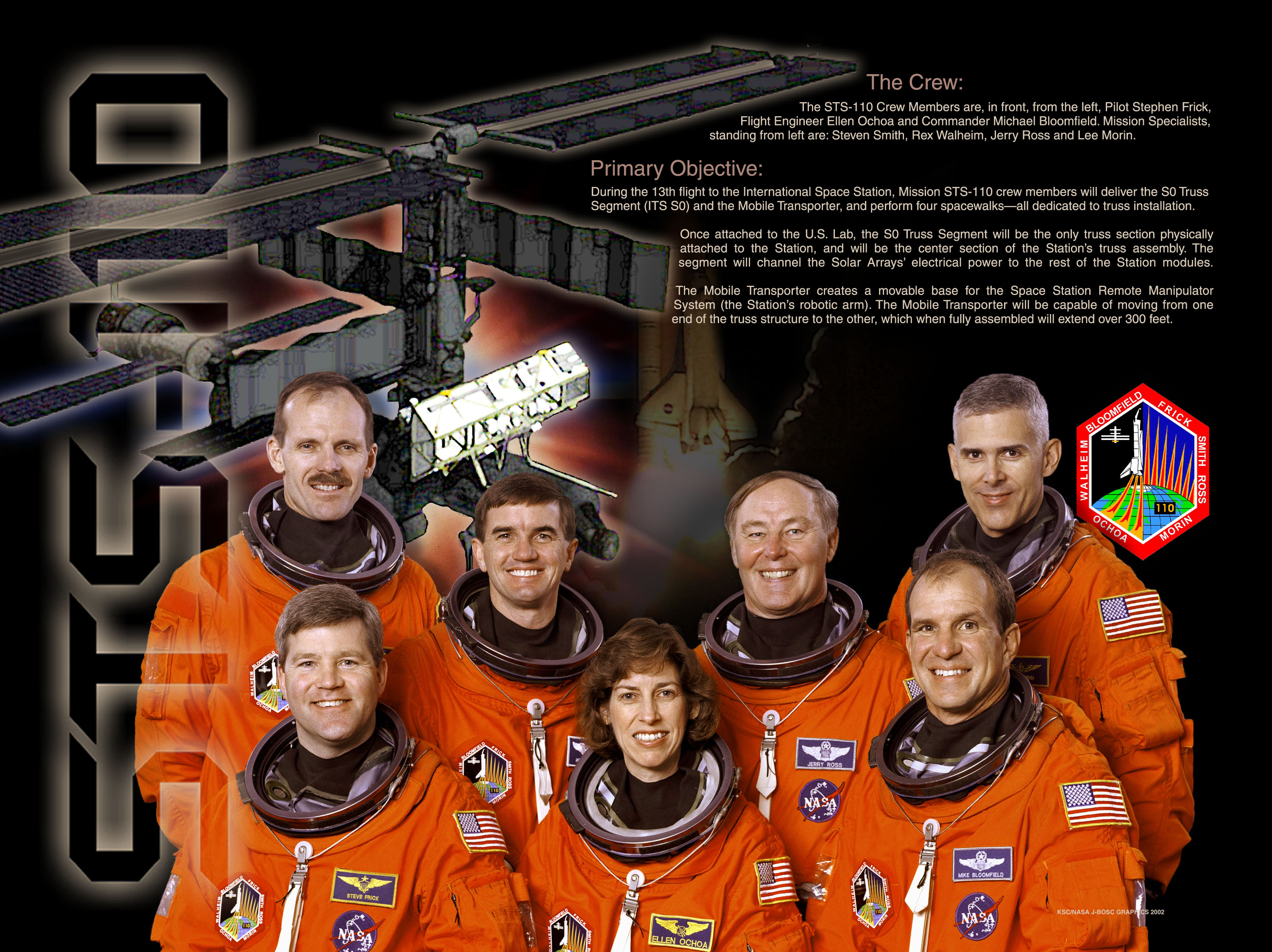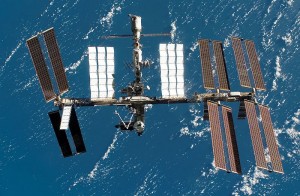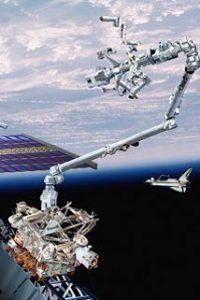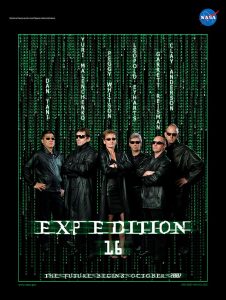STS-110 Delivers The Starboard-0 ITS
https://www.youtube.com/watch?v=Uq8Nnt5VzgE
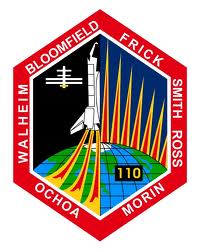 STS-110’s primary cargo included a new segment of the Integrated Truss Structure (ITS) labeled Starboard-0 (S-0). The S-0 ITS became the “centerpiece” of the Integrated Truss Structure and was attached to Destiny. The P-6 segment of the ITS would then be relocated from its position on the Z-1 Truss. Other cargo included the Canadian-built Mobile Transporter (MT), which would improve Canadarm2’s mobility by providing a rail system. The Atlantis also delivered experiments that included the Commercial Protein Growth High Density (CPCG-H). The initial launch date of April 4, 2002, was scrubbed due to a leak in a hydrogen vent line and rescheduled for April 8.
STS-110’s primary cargo included a new segment of the Integrated Truss Structure (ITS) labeled Starboard-0 (S-0). The S-0 ITS became the “centerpiece” of the Integrated Truss Structure and was attached to Destiny. The P-6 segment of the ITS would then be relocated from its position on the Z-1 Truss. Other cargo included the Canadian-built Mobile Transporter (MT), which would improve Canadarm2’s mobility by providing a rail system. The Atlantis also delivered experiments that included the Commercial Protein Growth High Density (CPCG-H). The initial launch date of April 4, 2002, was scrubbed due to a leak in a hydrogen vent line and rescheduled for April 8.
The launch of the Atlantis went off successfully, just 12 seconds before the close of the launch window. Docking on April 10th was successful and, when the hatches opened for the first time, Bursch was the first to greet them: “I’m just so happy to see other faces.” Mission Specialists Steven Smith and Rex Walheim made some equipment transfers in preparation for an EVA from Quest. Jerry Ross and Lee Morin transferred the CPCG-H and powered it up.
The first of four planned EVAs began the next day. Ellen Oschoa and Dan Bursch used Canadarm2 to lift the S-0 truss segment from Atlantis’ cargo bay and transfer it to its berth on Destiny. Bursch had nicknamed the Canadarm2 the “Big Arm” and noted that the most challenging part of this EVA would be sticking to a time limit for installing S-0 to avoid damage to equipment. Meanwhile, Mission Commander Michael Bloomfield and Pilot Stephen Frick powered up the Atlantis’ RMS to provide extra viewing angles for the spacewalkers.
Walheim and Smith made their egress from Quest. Walheim was making his first EVA and was impressed by the view. This was the sixth EVA for Smith and he remarked, “Beautiful, beautiful!” Walheim rode Canadarm2 down to the new ITS segment while Smith made his way around the station exterior. Their first task was to unfurl two of the four mounting struts on S-0 and make the first attachments to Destiny. They deployed trays of avionics equipment, hooked up lines for power, data and fluids, and hooked up the umbilical system that connected S-0 with the Mobile Transporter. The tasks took longer than expected and the spacewalkers were forced to call it off when their oxygen supply began to run out.
Questions Get Answered
Steve Smith answers an interested listener’s question while on STS-110.
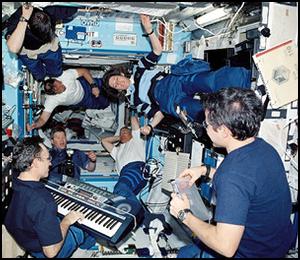
On April 12th, the two crews were occupied with cargo transfers and installation of new experiments that included two new biotechnology experiments. Morin and Ross installed a new experimental plant growth chamber in one of Destiny’s racks to replace one that had failed. A new storage freezer for crystal samples was also added to Destiny.
April 13th featured the second EVA with Ross and Morin. Ross was setting new records. This was his seventh spaceflight and eighth EVA. He had been an astronaut for twenty years and had assisted in the development of many of the tools used by astronauts on space station-related spacewalks. He commented on how familiar this was. The spacewalkers connected the final two struts on S-0 to Destiny and removed panels and clamps that had been used to support the truss segment while it was inside Atlantis’ bay. They attached a backup cable and reel to the Mobile Transporter. An attempt to remove a bolt from a mechanism that could cut away the MT in an emergency failed and was abandoned.
Smith and Walheim made the third EVA on April 14. They removed the device that had held S-0 in place while the connections between the truss segment and Destiny were made. They also configured some cables between S-0 and Canadarm2 that would allow the robotic arm to be commanded from S-0. The cables had been affected by exposure to space and Smith reported that they had become stiff and were sticking together. The problem caused their work with the connections to take longer than expected and plans to use the Canadarm2 to move a handrail were canceled. Once the EVA was complete, Atlantis used its engines to boost the International Space Station’s orbit and controllers in Houston performed some tests of the new Mobility Transporter. Tests of the MT continued on April 15th as they discovered some problems with the software that prevented the flatbed car from automatically latching itself to the ITS. It could latch itself if a command was sent up from the ground and one of the ground controllers responsible for Atlantis’ payload thought it was a problem with the alignment of the MT’s wheels.
Ross and Morin began the fourth and final EVA of the mission on April 16. Tasks included pivoting the Airlock Spur away from the truss segment and connecting it to Quest to provide easy access between Quest and the S-0 segment for future astronauts on an EVA. They also tested the operation of microswitches that would be used when connecting future truss segments to the S-0 segment and installed two halogen-bulb lights on Unity and Destiny. They also erected a work platform for future EVAs and connected the two S-0 circuit breakers that hadn’t been installed during the first spacewalk. Shock absorbers were also attached to the MT to prevent shocks from affecting Canadarm2. It was a lot of work but Ross commented that it beat one of his former jobs of baling hay. A second attempt to disconnect the bolt on MT’s unbilical guilotine failed, so they left it for future EVAs. The spacewalking astronauts also got a spectacular view of a thunderstorm over the Pacific Ocean and the Moon over the Atlantic. Not even an experienced spacewalker like Ross was immune to the sight. “This is what I call a room with a view!”
The spacewalkers called it a day. On April 17th, one of the final activities was to replace the Bio-Technology Refrigerator with a new Arctic-1 refrigerator for storing experimental samples. The Atlantis undocked, performed a flyaround and separated from the International Space Station. In an interview on April 18th, they reflected on a job well done with the beginning of the truss structure. A completed ITS would support two more science modules from Europe and Japan. The Atlantis landed on April 19.
Space Shuttle Collectibles on eBay
[simple-rss feed=”http://rest.ebay.com/epn/v1/find/item.rss?keyword=Space+Shuttle+STS-110&categoryId1=1&sortOrder=BestMatch&programid=1&campaignid=5337337555&toolid=10039&listingType1=All&lgeo=1&feedType=rss” limit=5]

